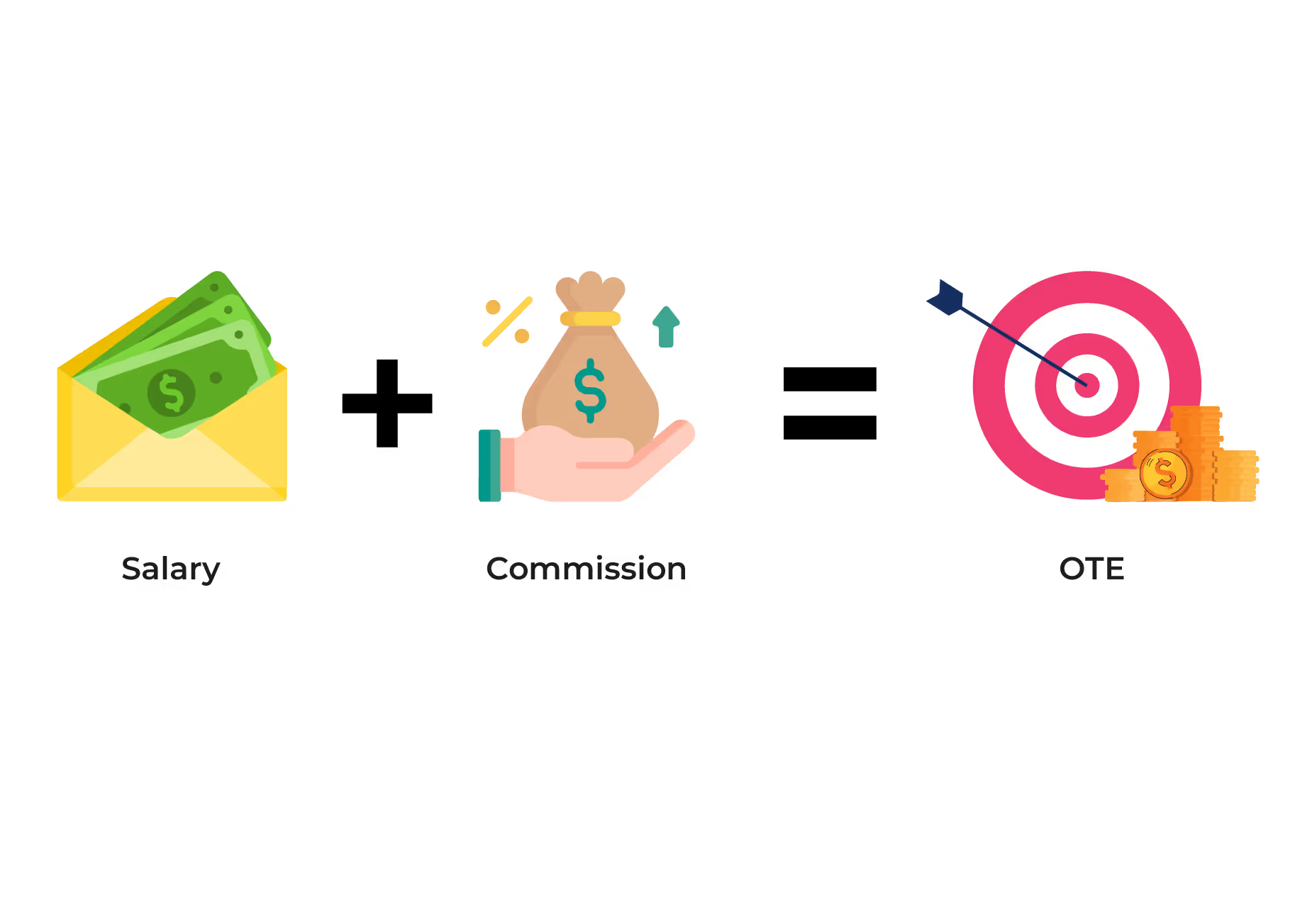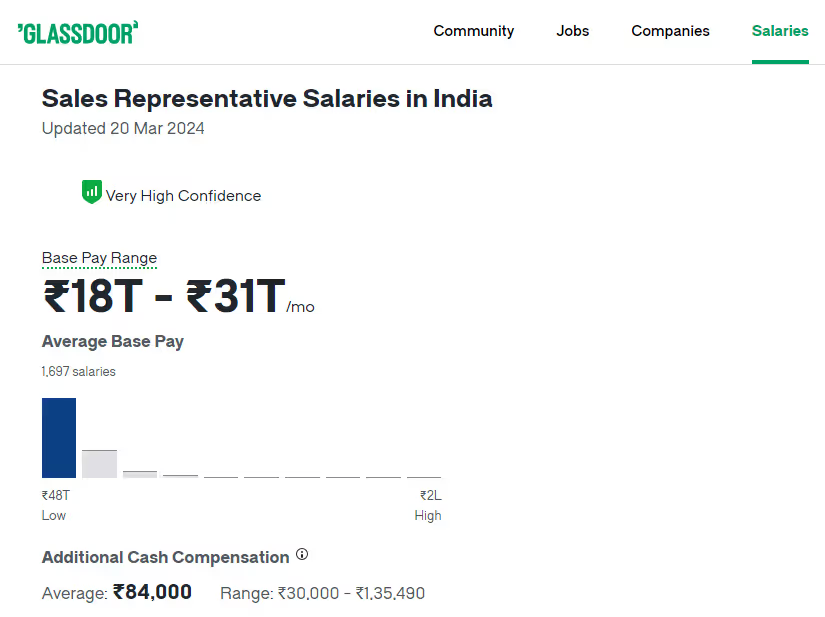
Blog
OTE in Compensation Plans: Benefits, Setting, and Best Practices
March 26, 2024


Key Insights
An archer loads an arrow into his bow, ensuring its precise placement. With a steady posture, draw back the bowstring, aligning the gaze to the distant target. With practiced finesse, they release the arrow slicing through the air with a whispered twish and a resounding thuck as it hits its mark.
Yet it takes years of practice and honing of skills for an archery to hit the bullseye. It also requires patience, presence of mind, and focus during the intense competition to make the perfect score.
The same principles apply to a sales rep to achieve their sales quota. Years of experience, consistent performance during the sales process, and knowing how to handle customers at each stage of the sales pipeline even under stressful situations decide the result.
In sales, the trophy for achieving a 100 percent sales quota is your on-target earnings.
In this blog, we show you how years of practice and honing of skills in sales benefit the salesforce through their On-target Earnings.
We give you a comprehensive reading on OTE salary meaning, capped vs uncapped OTE, the benefits of using OTE compensation, how to use OTE in your compensation, ways to set your OTE commission structure, and how to determine your pay mix.
Read on for more information.
What is OTE?
OTE stands for On-Target Earnings. It is the sum of the base salary and the commission that a sales rep earns upon achieving their sales quota.
On-target earning is calculated as:

For example, a sales rep with experience of 3 years is offered an On-Target Commission of Rs. 1 Lakh per month where the base salary is Rs. 25000 and additional pay of Rs. 75000 on achieving the target.
Such a compensation structure provides financial stability to sales reps as their base salary is paid irrespective of their sales. On the other hand, it motivates the sales reps to strive to achieve their monthly targets to earn the commission that will substantially increase their total earnings.
Here the On-target compensation is higher than the base salary to motivate sales reps, drive sales performance, enhance revenue generation, and boost growth and success. It is a compensation structure often used in performance-driven sales to encourage sales reps to achieve their goals timely.
What is Capped vs. Uncapped OTE
The OTE commission structure consists of two parts. The fixed pay is the base salary and the variable pay is the on-target commission. The companies can decide to design their variable pay as capped or uncapped for a particular sales role.
Let's look at how these two terms bring difference to the OTE sales incentive plan.
Capped OTE
In a capped OTE structure there is a limit to the potential commission that a sales rep can earn irrespective of their exceptional performance and the milestones they achieve. The cap is usually set to ensure better budget management and avoid any risk of unexpected commission payment.
For example, in a capped OTE with a base salary of Rs 35000 and an on-target commission of Rs 75000, the maximum variable pay the sales rep earns will be Rs 75000. Even after they exceed their sales targets, their on-target earning is restricted to a total pay of Rs. 1 Lakh.
Uncapped OTE
In an uncapped commission structure, there is no limit to the potential commission that a sales rep can earn. Depending on their performance and the targets they achieve and exceed they will be compensated. This limitless possibility will motivate sales reps to improve their game after each sale.
For example: A sales rep has an OTE of Rs 1 lakh when they achieve their sales quota. But even after achieving their target, they are successful in bringing new sales to the business, they can earn a commission for every new deal they close.
Both capped and uncapped OTEs have their advantages and disadvantages. While capping the commission provides better financial planning for the business, uncapped OTE opens wide possibilities for the salesforce and the business to grow.
Depending on the business model, budget capacity, and financial landscape, organizations can choose what best suits their sales operations.
Benefits of Using On-Target Earnings in Sales Compensation
Using On-Target Earnings in sales compensation offers several benefits for both employers and employees. Let us look at some of these advantages:

Clarity and Transparency
Implementing OTE in the compensation structure provides clarity in the earnings of the sales rep and transparency in variable pay calculation. Providing this understanding of the compensation structure will help in boosting sales motivation and achieving performance targets, thereby facilitating a clear delineation of types of incentive compensation.
Motivation
OTE compensation serves as a powerful motivation tool for the salesforce. While the base salary provides financial stability to focus on their sales quotas and targets, the variable pay opens up the possibility of earning according to their potential and skill. This will boost their motivation to enhance their performance and productivity to achieve on-target earnings.
Alignment with Objectives
OTE commission structure helps businesses to align the individual sales quotas with the larger company objectives. Since sales rep eligibility for variable pay is dependent on their sales quota achievement, they will be focused on strategizing plans and achieving their goals. These individual efforts and achievements will add up to the larger growth and success of the organization.
Competitive Advantage
OTE opens a competitive advantage to businesses by attracting top talents and retaining high-performing sales reps to the organization. The opportunity to earn a high commission while having the surety of a fixed income will motivate sales reps to drive sales, revenue, growth, and success for the organization.
Performance Evaluation
On-target earning allows objective evaluation of your sales reps' performance. Comparing the actual sales performance against their OTE targets will help sales managers assess the effectiveness of their sales team and identify areas of improvement. This impartial assessment will help in providing necessary training and coaching for upskilling and development, thereby fostering a culture of continuous improvement within the framework of broad-based compensation.
On-target Earning thus helps in making objective evaluations of your sales team’s performance, provides opportunities for growth and development, and motivates them to achieve their goals and quotas timely.
How to use OTE in Your Compensation Plan
Implementing OTE in your sales compensation plan requires proper planning and structure.
To begin with, OTE comprises two parts- the base salary and the variable pay. Sales managers must communicate this division with the sales reps to ensure there is clarity in the commission structure.
In addition, they must conduct compensatory analysis to ensure the base salary is a good enough amount that provide financial stability to the sales reps to take care of their everyday responsibilities and requirements. Furthermore, the variable compensation must be attractive to ensure positive behavior and desired results from the sales reps.
In OTE sales compensation, the variable pay is determined by the sales quota set for each sales rep. It is in achieving these set goals that they become eligible for incentives and commissions.
Hence, sales managers must ensure that the sales quotas are set by evaluating and understanding the individual potential and skills of sales reps. This ensures that the top-performing sales representatives are challenged by competitive targets, motivating them to use their full potential without finding the targets overly simplistic.
It must be noted that the less competitive sales reps are not demotivated or overburdened by these targets set for high achievers. Instead, they must be assigned sales quotas that equally motivate them to prove their effort, worth, and grit.
Sales managers must also be transparent about the commission calculation, whether the variable pay is capped or uncapped, the eligibility criteria for commission, etc. In addition, they must also communicate the expected sales performance, their roles and responsibilities, and the desired behavior from them. Deferred commissions accounting ensures accurate tracking and recognition of commission expenses over time, aligning with accounting standards and regulations.
In short, the effectiveness of OTE can be ensured only when it is clearly and transparently communicated with the salesforce.
Setting the OTE Compensation
Setting OTE compensation in your sales commission operation requires a system approach for effective implementations.

- Defining specific, measurable, attainable, relevant, and timely (SMART) goals will help in setting effective sales compensation programs.
- OTE compensation must be set after understanding market trends and competitor standards. This helps in attracting top talents and retaining high achievers.
- OTE sales compensation must strike a fine balance between base salary and variable pay. The fixed salary must be satisfactory to provide financial stability and the variable pay must be motivating to boost performance and sales.
- Sales managers must communicate clearly and transparently about the OTE commission structure, its eligibility factors, calculations, and any other metric to be known by the sales rep for its effectiveness.
- Setting your OTE compensation is not a one-time process. It requires regular review and adjustment based on feedback from employees, evaluation from sales managers, and overall impact analysis from management.
Hence, your OTE sales compensation must be structured and streamlined to track its effectiveness and identify the disadvantages of commission for consistent improvement. Determining the Pay Mix On-target earnings have a pay mix of base salary and variable pay. The base salary provides financial stability to sales reps and the variable pay motivates them to explore the potential of their skill and talent to earn high.
According to Glassdoor Salary Data, the base salary of a sales rep in India can range from Rs 18T- Rs 31. On the other hand, they have a higher chance of earning through their variable pay where the average cash compensation is at Rs 84000.
This range is huge as sales income is subject to individual factors as well as market conditions. For example, individual factors like sales performance, quotas, role and responsibility, and years of experience will determine how much base salary a sales rep can earn as well as the commission rate that determines the sales commissions.
The setting of commissions is also susceptible to market conditions. For example, the sales cycle length and complexity can vary depending on industries, the product type, the market changes, and industry trends that can affect the purchasing patterns of the customers.
Hence, according to Indian sales commission standards, the base salary is less than the variable pay. But the base salary is always set in such a way that it provides financial stability to the sales rep to meet their personal responsibilities.
While the possibility of a higher variable pay will motivate them to boost their performance, strive to increase sales, and impact the overall organizational growth for better income and earnings.

Final Thought
On-target earnings is an effective sales commission that can positively impact your operations.
It provides clarity to sales reps on the total amount they will earn upon achieving their full sales quota along with the promise of a base salary that is paid irrespective of their sales.
This clarity on the possible amount that they can earn with the security of fixed monthly pay will boost sales rep' motivation to strategize their sales process to close more deals.
In addition, OTE compensation enhances your chances of achieving your business objectives and growth. The commission structure enforces the timely closing of deals and fulfillment of sales quotas to be eligible for compensation.
This ensures that the individual targets are achieved promptly which will contribute to the overall growth and success of the organization.
Hence, OTE not only ensures a healthy payment structure for sales reps but also provides a sense of achievement and contribution to the growth achieved by their company.
To read more about these effective compensation plans, visit https://www.kennect.io/. For more information on incentive automation Book A Demo NOW!
ReKennect : Stay ahead of the curve!
Subscribe to our bi-weekly newsletter packed with latest trends and insights on incentives.
Thank you! Your submission has been received!
Oops! Something went wrong while submitting the form.
Your data is in safe hands. Check out our Privacy policy for more info




.avif)
%20(1).avif)









